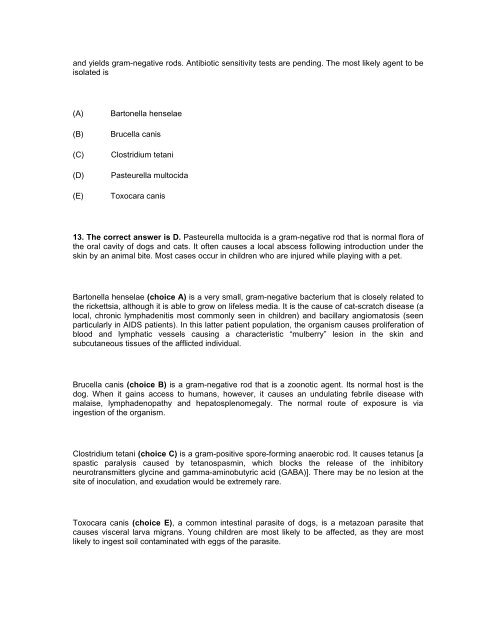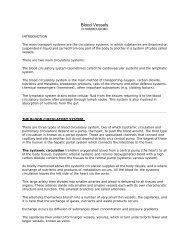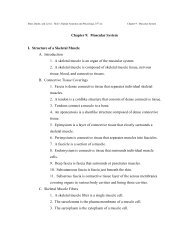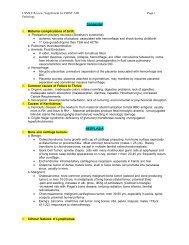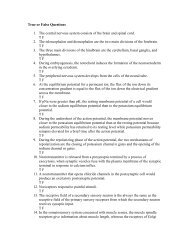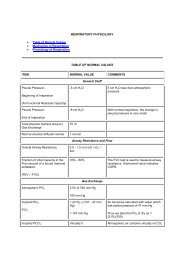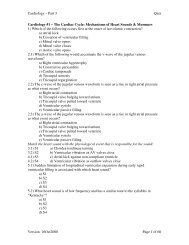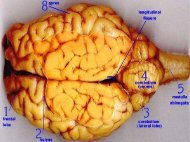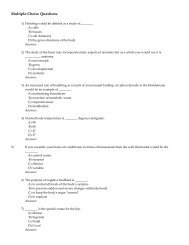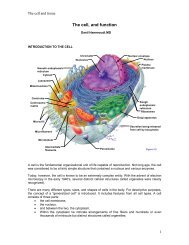L:\usmle review 7 - Sinoe medical homepage.
L:\usmle review 7 - Sinoe medical homepage.
L:\usmle review 7 - Sinoe medical homepage.
You also want an ePaper? Increase the reach of your titles
YUMPU automatically turns print PDFs into web optimized ePapers that Google loves.
and yields gram-negative rods. Antibiotic sensitivity tests are pending. The most likely agent to be<br />
isolated is<br />
(A)<br />
(B)<br />
(C)<br />
(D)<br />
(E)<br />
Bartonella henselae<br />
Brucella canis<br />
Clostridium tetani<br />
Pasteurella multocida<br />
Toxocara canis<br />
13. The correct answer is D. Pasteurella multocida is a gram-negative rod that is normal flora of<br />
the oral cavity of dogs and cats. It often causes a local abscess following introduction under the<br />
skin by an animal bite. Most cases occur in children who are injured while playing with a pet.<br />
Bartonella henselae (choice A) is a very small, gram-negative bacterium that is closely related to<br />
the rickettsia, although it is able to grow on lifeless media. It is the cause of cat-scratch disease (a<br />
local, chronic lymphadenitis most commonly seen in children) and bacillary angiomatosis (seen<br />
particularly in AIDS patients). In this latter patient population, the organism causes proliferation of<br />
blood and lymphatic vessels causing a characteristic “mulberry” lesion in the skin and<br />
subcutaneous tissues of the afflicted individual.<br />
Brucella canis (choice B) is a gram-negative rod that is a zoonotic agent. Its normal host is the<br />
dog. When it gains access to humans, however, it causes an undulating febrile disease with<br />
malaise, lymphadenopathy and hepatosplenomegaly. The normal route of exposure is via<br />
ingestion of the organism.<br />
Clostridium tetani (choice C) is a gram-positive spore-forming anaerobic rod. It causes tetanus [a<br />
spastic paralysis caused by tetanospasmin, which blocks the release of the inhibitory<br />
neurotransmitters glycine and gamma-aminobutyric acid (GABA)]. There may be no lesion at the<br />
site of inoculation, and exudation would be extremely rare.<br />
Toxocara canis (choice E), a common intestinal parasite of dogs, is a metazoan parasite that<br />
causes visceral larva migrans. Young children are most likely to be affected, as they are most<br />
likely to ingest soil contaminated with eggs of the parasite.


